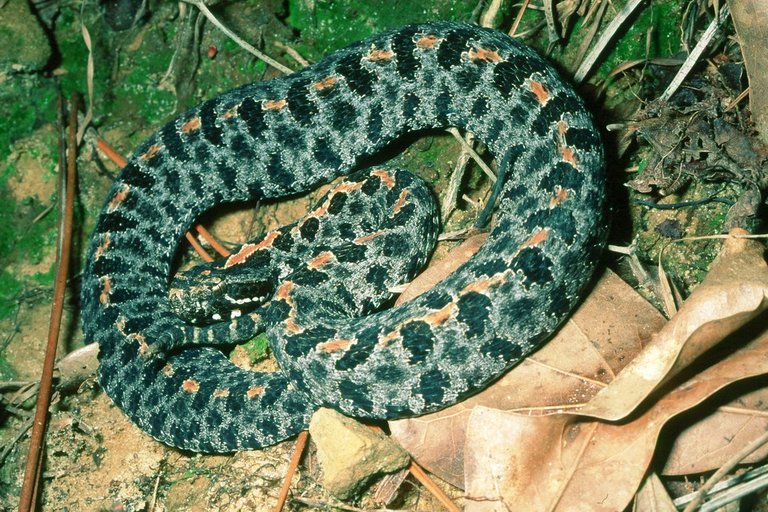Venom, Venomous Animals, and Antivenom Study
Just like me asking if you can tell the difference between Center and Centre, I could also ask the difference between poisonous and venomous. To explain the former which I do not intend to explain, you can do the research yourself, so this means that we are left with poisonous and venomous.
There are a few toxic animals that are regarded as Venomous even when a lot of them are regarded as poisonous. This is because for anything to be regarded as a poison, it needs to be ingested, inhaled, or absorbed into the body. When we talk about poisonous animals they can exist in different species from mushrooms, fishes, toads and frogs. But this is not the same for venomous as they deliver the toxin directly into the victim usually through wounds and one animal we are familiar with is snake but venomous animals can get their toxins into their victims through different ways from biting, stinging, or even stabbing.
Just the way there are different venomous species, so are there different venom in the animal kingdom and these animals use their venom for different purposes such as for defense in animals with stingers and spines, while animals with tentacles, or mouth parts that are toxic use their venom for hunting purposes. But this isn't the only reason why animals have venom because animals like spiders use their venom to kill and digest after capturing their prey, while some other animals like platypus use their venom to fight for mates.
For the sake of identifying how venomous a toxin is, scientists use the LD50 ranking method which is determined by the amount of dose it takes to kill half of the test animals. So with this method of ranking, it means that the higher the LD50 ranking number, the more venomous the organism is. There are always exceptions to these ranking but if we were to look at the ratio of death to bite, or sting to determine the most venomous animal, I do not think we will have two answers than snakes.
Snake Venom is a mixture of toxic cocktails made in their salivary gland and it is released from their hypodermic fangs or what we will call teeth. Normally, a snakes teeth would not do much harm to its prey if it didn't have toxins in them but with the toxins, the snake just need to release its poisonous cocktails which could be neurotoxins that paralyzes the prey, or Hemotoxins that causes the prey to bleed from inside.
As you would have taught that their preys would have evolved to become resistant to the venoms of snakes, but it looks like the genes of snake venom are evolving faster that it is always a step ahead of its preys. You wonder if there are animals that are resistant to snake venom, well we have the Honey badger which have develop the ability to constrict its vessels thereby preventing the effectiveness of snake venom that paralyzes prey. Mongooses and Hedgehogs also have mutations that control their muscle contraction against venoms that causes paralysis. While these animals use their muscles, animals like the Opossum do not need to worry itself because in its blood is an ingredient that is resistant to the proteolytic effects of Crotalid venoms from snakes.
These animals have made scientists to start working on antivenoms which I think I need because I just moved to a little remote area where snakes are common there and I am scared of snake bites. To do this, scientists are injecting nonlethal doses of venom into large animals like horses and these causes antibodies to work on the venom after which the antibodies are purified from the blood and with that an anti-venom is ready but asides from this process, people are starting to do self immunization as they would regularly inject small amount of venom into their body.
Sincerely, I will never try this or advise anyone to try this because it will be difficult to determine the lethal dose of the venom being introduced into the body. These people inject small amount not enough to kill them but enough to get their antibodies working actively.
https://www.ncbi.nlm.nih.gov/pmc/articles/PMC5315628/
https://www.sciencedirect.com/science/article/abs/pii/S0041010115000690
https://www.sciencedirect.com/science/article/abs/pii/0041010177900666
https://www.acs.org/pressroom/newsreleases/2015/march
https://snakedb.org/pages/ld50.php
https://www.pnas.org/doi/abs/10.1073/pnas.1312648110
https://academic.oup.com/mbe/article/32/1/173/2925580?login=false
https://www.nature.com/articles/nature04328
https://www.sciencedirect.com/science/article/abs/pii/S0022096515002179



Snake; I do not like them and I am really scared of them. You see, whatever can transfer toxin to a human in the bid of protecting, hunting, and digesting, then count me out of it. This was why I didn't bother doing anything related to animal or zoology in the University.
Thanks for your contribution to the STEMsocial community. Feel free to join us on discord to get to know the rest of us!
Please consider delegating to the @stemsocial account (85% of the curation rewards are returned).
Thanks for including @stemsocial as a beneficiary, which gives you stronger support.